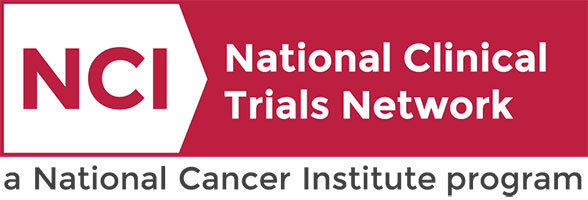Circulating Tumor DNA to Guide Changes in Standard of Care Chemotherapy
Circulating Tumor DNA to Guide Changes in Standard of Care Chemotherapy
This phase II trial tests how well evaluating circulating tumor deoxyribonucleic acid (ctDNA) works to guide therapy-change decisions in treating patients with triple-negative breast cancer (TNBC) that has spread from where it first started (primary site) to other places in the body (metastatic). This study wants to learn if small pieces of DNA associated with a tumor (called circulating tumor DNA, or ctDNA) can be detected in investigational blood tests during the course of standard chemotherapy treatment for breast cancer, and whether information from such investigational ctDNA blood testing could possibly be used as an early indication of chemotherapy treatment failure. It is hoped that additional information from investigational blood testing for ctDNA could help doctors to switch more quickly from a standard chemotherapy treatment that typically has significant side effects and which may not be working, to a different standard treatment regimen against TNBC, called sacituzumab govitecan. Sacituzumab govitecan is a monoclonal antibody, called hRS7, linked to a chemotherapy drug, called irinotecan. hRS7 is a form of targeted therapy because it attaches to specific molecules (receptors) on the surface of cancer cells, known as TROP2 receptors, and delivers irinotecan to kill them. Studying ctDNA may assist doctors to change therapy earlier if needed, and may improve health outcomes in patients with metastatic TNBC.
Breast
Phase II
Adults
Chemotherapy - cytotoxic
Capecitabine,
Carboplatin,
Eribulin,
Gemcitabine,
Nab-Paclitaxel,
Paclitaxel,
Sacituzumab govitecan
Abramson, Vandana
Local
Mayo Clinic, University of Nebraska Medical Center, Vanderbilt University
08-04-2023
Eligibility
18 Years and older
ALL
false
Inclusion Criteria:
Clinical stage IV (metastatic) estrogen receptor (ER), PR, HER2 negative invasive mammary carcinoma, previously documented by histological analysis and that meets the following criteria: * HER2 negativity is defined as any of the following by local laboratory assessment: * In-situ hybridization (ISH) non-amplified (ratio of HER2 to CEP17 2.0 or * Single probe average HER2 gene copy number 4 signals/cell), or * Immunohistochemistry (IHC) 0 or IHC 1+ (if more than one test result is available and not all results meet the inclusion criterion definition, all results should be discussed with the sponsor-investigator to establish eligibility of the patient) * ER and PR negativity are defined as = 10% of cells expressing hormonal receptors via IHC analysis
PD-L1 negative (combined positive score \[CPS\] 10) or otherwise not appropriate for checkpoint inhibitors
Patients must have measurable disease according to the standard RECIST version 1.1 \* NOTE: CT scans or MRIs used to assess the measurable disease must have been completed with 28 days prior to the study drug initiation
Patients must be age >= 18 years; both male and female are eligible
Patients must exhibit an Eastern Cooperative Oncology Group (ECOG) performance status of = 2
Patients must have the ability to understand and the willingness to sign a written informed consent prior to registration on study
No prior chemotherapy regimens for metastatic disease
Absolute neutrophil count (ANC) >= 1000/mm\^3 (obtained less than 28 days from initiation of study drug)
Platelet count >= 100,000/mm\^3 (obtained less than 28 days from initiation of study drug)
Bilirubin, serum glutamic oxaloacetic transaminase (SGOT), serum glutatmic pyruvic transaminase (SGPT), alkaline phosphatase = 4x upper limits of normal if no liver metastases present
Serum total bilirubin must be 3x upper limits of normal for patients with Gilbert disease
Total bilirubin, SGOT, SGPT = 6x upper limits of normal if liver metastases present (obtained less than 28 days from initiation of study drug)
For patients who are not postmenopausal (women) or surgically sterile (absence of ovaries and/or uterus or vasectomy), agreement to remain abstinent or to use two adequate methods of contraception (e.g., condoms, diaphragm, vasectomy/vasectomized partner, tubal ligation), during the treatment period and for at least 30 days after the last dose of study treatment. Hormone based oral contraceptives are not allowed on study. Postmenopausal is defined as: * Age >= 55 years * Age = 55 years and amenorrheic for 12 months in the absence of chemotherapy, tamoxifen, toremifene, or ovarian suppression; or follicle stimulating hormone and estradiol in the postmenopausal range
Exclusion Criteria:
Leptomeningeal disease
Uncontrolled tumor-related pain: patients requiring narcotic pain medication must be on a stable regimen at registration. Symptomatic lesions (e.g., bone metastases or metastases causing nerve impingement) amenable to palliative radiotherapy should be treated prior to randomization. Patients should be recovered from the effects of radiation. There is no required minimum recovery period. Asymptomatic metastatic lesions whose further growth would likely cause functional deficits or intractable pain (e.g., epidural metastasis that is not presently associated with spinal cord compression) should be considered for loco-regional therapy if appropriate prior to randomization
Uncontrolled hypercalcemia (> 1.5 mmol/L ionized calcium or calcium > 12 mg/dL or corrected serum calcium > upper limit of normal \[ULN\]) or symptomatic hypercalcemia requiring continued use of bisphosphonate therapy
Malignancies other than TNBC within 5 years prior to randomization, with the exception of those with a negligible risk of metastasis or death and treated with expected curative outcome (such as adequately treated carcinoma in situ of the cervix or basal or squamous cell skin cancer)
Concurrent anti-cancer therapy (chemotherapy, radiation therapy, surgery, immunotherapy, biological therapy) other than the ones specified in the protocol
Women only: pregnancy or lactation
Evidence of significant uncontrolled concomitant disease that in the opinion of the investigator could affect compliance with the protocol or interpretation of results, including significant liver disease (such as cirrhosis, uncontrolled major seizure disorder, or superior vena cava syndrome)
Significant cardiovascular disease, such as New York Heart Association (NYHA) cardiac disease (class II or greater), myocardial infarction within 3 months prior to randomization, unstable arrhythmias, or unstable angina. Patients with a known left ventricular ejection fraction (LVEF) 35% will be excluded. Patients with known coronary artery disease or congestive heart failure not meeting the above criteria must be on a stable medical regimen that is optimized in the opinion of the treating physician, in consultation with a cardiologist if appropriate
Major surgical procedure within 4 weeks prior to randomization or anticipation of the need for a major surgical procedure during the course of the study other than for diagnosis. Placement of central venous access catheter(s) (e.g., port or similar) is not considered a major surgical procedure and is therefore permitted
Psychiatric illness/social situations that would compromise patient safety or limit compliance with study requirements
Clinical stage IV (metastatic) estrogen receptor (ER), PR, HER2 negative invasive mammary carcinoma, previously documented by histological analysis and that meets the following criteria: * HER2 negativity is defined as any of the following by local laboratory assessment: * In-situ hybridization (ISH) non-amplified (ratio of HER2 to CEP17 2.0 or * Single probe average HER2 gene copy number 4 signals/cell), or * Immunohistochemistry (IHC) 0 or IHC 1+ (if more than one test result is available and not all results meet the inclusion criterion definition, all results should be discussed with the sponsor-investigator to establish eligibility of the patient) * ER and PR negativity are defined as = 10% of cells expressing hormonal receptors via IHC analysis
PD-L1 negative (combined positive score \[CPS\] 10) or otherwise not appropriate for checkpoint inhibitors
Patients must have measurable disease according to the standard RECIST version 1.1 \* NOTE: CT scans or MRIs used to assess the measurable disease must have been completed with 28 days prior to the study drug initiation
Patients must be age >= 18 years; both male and female are eligible
Patients must exhibit an Eastern Cooperative Oncology Group (ECOG) performance status of = 2
Patients must have the ability to understand and the willingness to sign a written informed consent prior to registration on study
No prior chemotherapy regimens for metastatic disease
Absolute neutrophil count (ANC) >= 1000/mm\^3 (obtained less than 28 days from initiation of study drug)
Platelet count >= 100,000/mm\^3 (obtained less than 28 days from initiation of study drug)
Bilirubin, serum glutamic oxaloacetic transaminase (SGOT), serum glutatmic pyruvic transaminase (SGPT), alkaline phosphatase = 4x upper limits of normal if no liver metastases present
Serum total bilirubin must be 3x upper limits of normal for patients with Gilbert disease
Total bilirubin, SGOT, SGPT = 6x upper limits of normal if liver metastases present (obtained less than 28 days from initiation of study drug)
For patients who are not postmenopausal (women) or surgically sterile (absence of ovaries and/or uterus or vasectomy), agreement to remain abstinent or to use two adequate methods of contraception (e.g., condoms, diaphragm, vasectomy/vasectomized partner, tubal ligation), during the treatment period and for at least 30 days after the last dose of study treatment. Hormone based oral contraceptives are not allowed on study. Postmenopausal is defined as: * Age >= 55 years * Age = 55 years and amenorrheic for 12 months in the absence of chemotherapy, tamoxifen, toremifene, or ovarian suppression; or follicle stimulating hormone and estradiol in the postmenopausal range
Exclusion Criteria:
Leptomeningeal disease
Uncontrolled tumor-related pain: patients requiring narcotic pain medication must be on a stable regimen at registration. Symptomatic lesions (e.g., bone metastases or metastases causing nerve impingement) amenable to palliative radiotherapy should be treated prior to randomization. Patients should be recovered from the effects of radiation. There is no required minimum recovery period. Asymptomatic metastatic lesions whose further growth would likely cause functional deficits or intractable pain (e.g., epidural metastasis that is not presently associated with spinal cord compression) should be considered for loco-regional therapy if appropriate prior to randomization
Uncontrolled hypercalcemia (> 1.5 mmol/L ionized calcium or calcium > 12 mg/dL or corrected serum calcium > upper limit of normal \[ULN\]) or symptomatic hypercalcemia requiring continued use of bisphosphonate therapy
Malignancies other than TNBC within 5 years prior to randomization, with the exception of those with a negligible risk of metastasis or death and treated with expected curative outcome (such as adequately treated carcinoma in situ of the cervix or basal or squamous cell skin cancer)
Concurrent anti-cancer therapy (chemotherapy, radiation therapy, surgery, immunotherapy, biological therapy) other than the ones specified in the protocol
Women only: pregnancy or lactation
Evidence of significant uncontrolled concomitant disease that in the opinion of the investigator could affect compliance with the protocol or interpretation of results, including significant liver disease (such as cirrhosis, uncontrolled major seizure disorder, or superior vena cava syndrome)
Significant cardiovascular disease, such as New York Heart Association (NYHA) cardiac disease (class II or greater), myocardial infarction within 3 months prior to randomization, unstable arrhythmias, or unstable angina. Patients with a known left ventricular ejection fraction (LVEF) 35% will be excluded. Patients with known coronary artery disease or congestive heart failure not meeting the above criteria must be on a stable medical regimen that is optimized in the opinion of the treating physician, in consultation with a cardiologist if appropriate
Major surgical procedure within 4 weeks prior to randomization or anticipation of the need for a major surgical procedure during the course of the study other than for diagnosis. Placement of central venous access catheter(s) (e.g., port or similar) is not considered a major surgical procedure and is therefore permitted
Psychiatric illness/social situations that would compromise patient safety or limit compliance with study requirements


